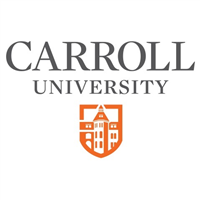- Find Your College
- Scholarships
- Pay for College
-
Articles
- COLLEGES
- Most Recent
- Affordability & Cost
- College Search
- Comparisons
- College Majors & Minors
- Myths
- News & Trends
- Tips, Tools & Advice
- Admissions
- Most Recent
- ACT & SAT
- College Admissions
- College Applications
- Myths
- Online Colleges
- Questions & Answers
- About
- Home
- >
- Browse All Majors
- >
- Communications Technologies/Technicians And Support Services
- >
- Graphic Communications
- >
- Graphic Communications, General
Graphic Communications, General
Select Type of Degree:
Select State:
|
#1

California Polytechnic State University-San Luis Obispo
|
|||||||||||
|
#2

Carroll University
|
|||||||||||
|
#3

University of Maryland Global Campus
|
|||||||||||
|
#4

Chowan University
|
|||||||||||
|
#5

University of Charleston
|
|||||||||||
|
#6

Southern Nazarene University
|
|||||||||||
|
#7

Illinois State University
|
|||||||||||
|
#8

Siena Heights University
|
|||||||||||
|
#9

Stephens College
|
|||||||||||
|
#10

University of Northern Iowa
|
|||||||||||
|
*The estimated net prices above are College Raptor’s estimate. Please contact the college financial aid office for actual net cost figures.
|
|||||||||||
| Institution | Scaled Score | Acceptance Rate | Annual Degrees Awarded | SAT Score | Est. Net Price * | Median Starting Salary | Save | |
|---|---|---|---|---|---|---|---|---|
 California Polytechnic State University-San Luis Obispo San Luis Obispo, CA Each year, California Polytechnic State University-San Luis Obispo awards...view more | 100 | 30% | 83 | 1,230 - 1,420 | $16,888 | $51,636 | ||
 Carroll University Waukesha, WI Every year, Carroll University awards about 105 degrees to students studying...view more | 69 | 58% | 10 | 1,100 - 1,310 | $25,171 | $57,083 | ||
 University of Maryland Global Campus Adelphi, MD Every year, the University of Maryland Global Campus awards about 1936...view more | 60 | -- | 74 | -- | $14,545 | $48,734 | ||
 Chowan University Murfreesboro, NC Each year, Chowan University awards about 30 degrees to those studying...view more | 54 | 72% | 4 | 920 - 1,190 | $15,845 | $51,050 | ||
 University of Charleston Charleston, WV Each year, the University of Charleston grants around 341 degrees to students...view more | 51 | 65% | 7 | 1,000 - 1,150 | $21,100 | $50,727 | ||
 Southern Nazarene University Bethany, OK Every year, Southern Nazarene University grants about 76 degrees to those...view more | 51 | -- | 4 | -- | $19,825 | $51,718 | ||
 Illinois State University Normal, IL At Illinois State University, the most popular majors students pursue are...view more | 50 | 89% | 20 | 1,040 - 1,250 | $20,871 | $54,838 | ||
 Siena Heights University Adrian, MI At Siena Heights University, the most popular majors students study are...view more | 45 | 67% | 5 | 890 - 1,110 | $17,740 | $50,810 | ||
 Stephens College Columbia, MO Every year, Stephens College awards about 13 degrees to those studying...view more | 44 | 92% | 1 | 930 - 1,160 | $23,261 | $50,290 | ||
 University of Northern Iowa Cedar Falls, IA At the University of Northern Iowa, the most popular majors students study...view more | 42 | 94% | 9 | 1,040 - 1,240 | $15,931 | $55,185 |
*The estimated net prices above are College Raptor’s estimate. Please contact the college financial aid office for actual net cost figures.
About Graphic Communications, General
A program that generally prepares individuals to apply technical knowledge and skills in the manufacture and distribution or transmission of graphic communications products. Includes instruction in the prepress, press, and postpress phases of production operations and processes such as offset lithography, flexography, gravure, letterpress, screen printing, foil stamping, digital imaging, and other reproduction methods.
While Graphic Communications, General offers degrees up to the Bachelors degree, most students study towards a Bachelors degree. Students major in Graphic Communications, General all over the country, though the major at the Bachelors degree level has the most graduates in California. The average annual income for an undergraduate degree in Graphic Communications, General is $40,500.
Careers
The highest paying career for Graphic Communications, General majors is Prepress Technicians and Workers. But, another thing to consider is how many job openings there currently is. A position that is in high need that a degree in Graphic Communications, General can prepare you for is Prepress Technicians and Workers.
Top Paying Careers
These are the highest paying careers for Graphic Communications, General majors.
| Career | Median Salary | Average Annual Job Openings | Employment 2022 | Employment 2032 | % Change | |
|---|---|---|---|---|---|---|
| Prepress Technicians and Workers | $45,070 | 460 | 4,728 | 3,919 | -17% |
Most In-Demand Careers
These are the careers in highest demand for Graphic Communications, General majors.
Student Demographics




Subscribe to Our Newsletter
Join thousands of students and parents learning about finding the right college, admissions secrets, scholarships, financial aid, and more.

College Raptor, Raptor, InsightFA, FinanceFirst, and “The Right College. The Best Price.” are registered trademarks of College Raptor, Inc.



